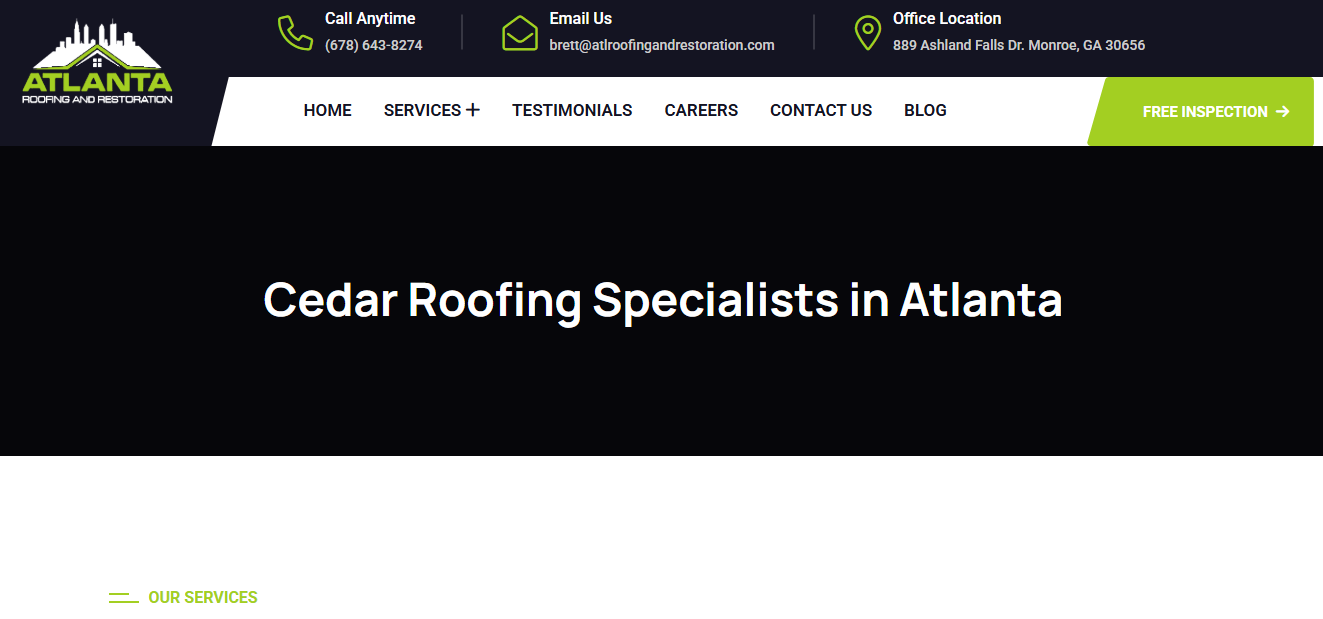Sustainability is no longer just a buzzword; it’s a core principle for businesses that want to thrive in today’s world. And as a sustainability or corporate social responsibility (CSR) professional, you’re likely at the forefront of driving these efforts within your organization. One tool that can significantly enhance your ability to lead these initiatives is ISO 50001 training. But what exactly is ISO 50001, and how can this training benefit you, your organization, and the planet?
Let’s walk through what ISO 50001 is all about and why you, as a sustainability professional, should consider undergoing ISO 50001 training. After all, as much as sustainability is about making a difference, it’s also about making a measurable difference.
What Is ISO 50001?
ISO 50001 is an international standard that provides a framework for organizations to improve their energy performance and increase energy efficiency. It focuses on reducing energy consumption, cutting costs, and lowering carbon emissions.
You might be thinking, “Energy efficiency? Isn’t that something companies have already been trying to improve for years?” And you’d be right—but here’s the thing: ISO 50001 isn’t just about making small tweaks here and there. It’s about establishing an energy management system (EnMS) that’s integrated into your organization’s overall business strategy. It’s a systematic approach to energy efficiency that’s data-driven, measurable, and scalable.
So, instead of merely reacting to energy costs or environmental pressures, ISO 50001 helps businesses take a proactive stance—identifying energy-saving opportunities, making informed decisions, and achieving long-term sustainability goals.
Why Should Sustainability and CSR Professionals Pursue ISO 50001 Training?
Let’s get straight to it: if you’re in the business of sustainability, ISO 50001 training is a game-changer. Here’s why:
1. Empowering You to Lead Effective Change
Sustainability is about more than just reducing waste or offsetting emissions. It’s about making a lasting impact across your organization, from your energy usage to your operational efficiency. ISO 50001 training arms you with the skills to drive that change. It allows you to manage and optimize energy use in a way that aligns with your organization’s sustainability goals.
As you learn how to apply the standard, you’ll gain the knowledge to lead your company toward better energy management practices. The training teaches you how to develop, implement, and review energy management systems, ensuring that energy-saving initiatives aren’t just surface-level but embedded deeply in your organization’s DNA.
2. Achieving Compliance and Meeting Global Standards
In many industries, there’s growing pressure to not just meet local regulations, but to align with international standards as well. ISO 50001 is recognized worldwide, and achieving certification can demonstrate your commitment to energy management and corporate responsibility. Training ensures you’re equipped to navigate both regional and global regulations, helping your company stay compliant while boosting its reputation on the global stage.
Let’s face it: CSR is more than just a nice thing to do these days; it’s an expectation from consumers, investors, and other stakeholders. ISO 50001 certification can give your organization the edge when it comes to demonstrating real, measurable sustainability efforts.
3. Driving Cost Reduction and Efficiency
You know the old saying, “What gets measured gets managed”? Well, ISO 50001 training gives you the tools to measure your organization’s energy consumption in a more detailed and accurate way. With the data and insights provided by the system, you can identify inefficiencies and take steps to reduce them, leading to significant cost savings.
This is especially important for CSR professionals, as improving energy efficiency doesn’t just benefit the environment—it benefits your bottom line too. Through ISO 50001, you can showcase to your stakeholders that sustainability isn’t just a feel-good initiative but a financially sound one.
4. Boosting Your Career and Professional Credibility
Having ISO 50001 certification under your belt enhances your professional credentials. It’s a globally recognized standard, and it shows that you have the expertise to manage energy within your organization. The training is a solid way to prove you are a leader in sustainability—someone who doesn’t just talk about change but knows how to make it happen.
By becoming ISO 50001 certified, you’re adding a powerful tool to your professional toolkit, which can increase your chances of advancement and open doors to new opportunities.
What Does ISO 50001 Training Involve?
Okay, so what can you expect during the training process? ISO 50001 training is designed to give you a comprehensive understanding of the standard and how to apply it to your organization’s energy management strategy.
1. Understanding Energy Management Systems (EnMS)
The first part of the training focuses on understanding the concept of an energy management system. You’ll learn how to set up an EnMS, define energy policies, and identify energy-saving opportunities. This foundational knowledge is critical because without a system in place, it’s nearly impossible to manage energy consumption effectively.
2. Energy Policy and Planning
ISO 50001 emphasizes the importance of developing an energy policy and planning for energy performance improvement. Training will guide you through creating policies that not only meet regulatory requirements but also align with the organization’s sustainability goals. Planning involves determining where energy savings are most likely, setting clear objectives, and developing action plans.
3. Energy Performance Evaluation
One of the core elements of ISO 50001 is the monitoring and evaluation of energy performance. Training will show you how to track energy consumption, compare it against benchmarks, and measure the success of your energy-saving initiatives. You’ll also learn how to conduct energy audits and perform gap analyses to identify where further improvements can be made.
4. Continual Improvement
ISO 50001 isn’t a one-and-done deal. It’s all about continuous improvement. The training will guide you on how to review and refine the energy management system, ensuring that energy performance continues to improve over time. This iterative process allows your organization to stay ahead of emerging energy challenges and stay on track toward its sustainability goals.
Real-World Applications of ISO 50001
After the training, it’s time to put everything into action. Here’s how ISO 50001 can make a real difference in your organization:
1. Energy Monitoring and Reporting
One of the best ways to show the impact of ISO 50001 is through clear, actionable energy reports. These reports can track everything from energy use to carbon emissions, giving you the data you need to communicate your successes to stakeholders. They also help identify inefficiencies, allowing your team to target areas for improvement.
2. Optimizing Energy Use in Operations
For large companies with complex operations, energy management can seem daunting. But with ISO 50001, you’ll have a structured approach to optimizing energy use at every level of your organization. Whether it’s through better equipment maintenance, smarter scheduling, or energy-efficient processes, you’ll be able to implement measures that reduce consumption across the board.
3. Cutting Operational Costs
With better energy management comes lower operational costs. Through ISO 50001, organizations are often able to reduce energy consumption significantly, which directly leads to cost savings. For a CSR professional, this is a win-win: you get to improve sustainability and save money simultaneously, all while increasing the company’s competitiveness in the market.
4. Engaging Employees in Sustainability Initiatives
ISO 50001 training also emphasizes the importance of engaging employees in energy-saving efforts. By fostering a culture of energy awareness and getting buy-in from all levels of the organization, you ensure that energy efficiency isn’t just a top-down initiative but something that everyone is involved in. This collective effort can make a huge impact.
How to Choose the Right ISO 50001 Training
Choosing the right training provider is crucial to ensuring that you’re getting the most out of your investment. Here are a few things to look out for:
- Accreditation: Make sure the training provider is accredited by a recognized body. This ensures that the course meets international standards and that your certification will be recognized globally.
- Format: Training can be delivered in various formats—online, in-person, or a hybrid approach. Choose the one that works best for your learning style and schedule.
- Practical Application: Look for a training program that includes case studies, examples, and hands-on applications. This will make it easier to translate what you learn into real-world action.
- Trainer Expertise: Choose a provider with trainers who have direct experience in energy management and sustainability. Real-world insights from experienced trainers will make the learning process more valuable.
Conclusion: Why ISO 50001 Training is Crucial for CSR Professionals
ISO 50001 training isn’t just about ticking a box for compliance or gaining a certification. It’s about becoming a leader in the field of energy management and sustainability. It equips you with the knowledge and tools to drive real change within your organization—whether that’s cutting costs, reducing emissions, or creating a long-term culture of sustainability.
So, if you’re ready to enhance your professional credentials, boost your company’s sustainability efforts, and contribute meaningfully to the fight against climate change, ISO 50001 training is your next step. It’s an investment that benefits not only your career but the planet too.
And remember—this is just the beginning. With ISO 50001, the possibilities for improving your organization’s energy performance are endless. Ready to get started? The planet—and your organization—will thank you.









